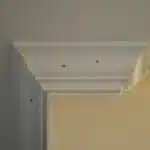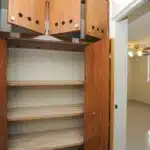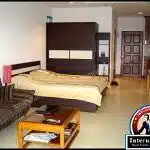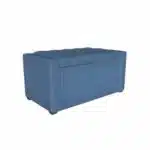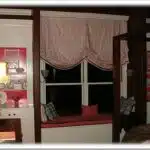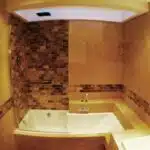Closets are an essential part of a well-organized home. A properly designed closet can make the most out of the available space, reduce clutter, and create a sense of order in one’s daily routines. As a closet builder/designer, I have come across many clients who struggle with organizing their closets and finding adequate storage solutions. In this article, I will share some tips and tricks on how to build a closet that is functional, stylish, and tailored to your needs.
To begin with, it’s important to assess your storage requirements before building a closet. This involves taking inventory of your wardrobe items, such as clothing, shoes, accessories, and other personal belongings that need to be stored in the closet. It’s also essential to consider how often you use each item and whether you need easy access or long-term storage for certain pieces. By analyzing these factors, we can determine the best layout for the closet that maximizes efficiency while minimizing clutter. With careful planning and attention to detail, anyone can build a custom closet that meets their unique needs and enhances their daily life.
Assessing Your Storage Needs
Did you know that the average American spends 55 minutes a day looking for things they own but cannot find? Maximizing efficiency and minimizing clutter is key when it comes to building a closet. As a closet builder/designer, it is important to assess your storage needs before starting any project.
To begin, take inventory of all the items you plan on storing in your new closet. This includes clothing, shoes, accessories, and any other miscellaneous items. Once you have an idea of what you need to store, consider how much space each item will require. This will help determine the size and layout of your new closet.
Next, think about how often you use each item. Items that are used frequently should be easily accessible while those used less often can be stored in harder to reach areas. Additionally, consider if there are any seasonal or special occasion items that will only be used a few times a year. These items can be stored separately to free up space in your main closet area. By assessing your storage needs in this way, you can create a custom design that maximizes efficiency and minimizes clutter.
With your storage needs assessed, the next step is measuring your space to ensure everything fits perfectly.
Measuring Your Space
Once you’ve assessed your storage needs, it’s time to move on to measuring your space. Before you can begin building your closet, it’s important to know exactly how much room you have to work with. This will help you determine the size and layout of your DIY closet organizers, as well as ensure that you’re optimizing storage space as effectively as possible.
One of the first things you should do when measuring your space is take note of any obstacles or challenges that may affect the design of your closet. For example, if there’s a window or door in the space where you want to build your closet, this may require some creative thinking in order to maximize space. Additionally, consider any sloping walls or other architectural features that could impact the final design.
Once you have a good sense of the constraints and opportunities presented by your space, it’s time to get out the measuring tape. Be sure to measure both width and height dimensions accurately, taking into account baseboards and other fixtures that may impact available space. With these measurements in hand, you’ll be ready to start designing your closet layout and selecting materials for your DIY project.
- When measuring for a custom closet solution, always measure twice! This will help ensure accuracy and prevent costly mistakes.
- Consider using online tools or software programs designed specifically for closet design – these can help simplify the process and give you a better idea of what will work best in your space.
- Don’t forget about lighting – proper illumination is key when it comes to creating an organized and functional closet.
- When choosing materials for your DIY closet organizers, opt for high-quality options that are built to last – this will save money and minimize waste over time.
With accurate measurements and a clear understanding of what will work best in your space, it’s time to move on to choosing your closet design. Whether you’re looking for something sleek and minimalist or prefer a more traditional look, there are countless options to choose from that will help you create a closet that’s both functional and stylish.
Choosing Your Closet Design
Accurately measuring the space available for the closet is essential in order to determine the right design. Assessing the storage needs of the user is equally important in order to design a closet that can accommodate those needs. It is recommended to take into account the user’s preferences and lifestyle when making the decision on the design of the closet. An experienced closet builder can help to ensure the best design is chosen for the available space and storage needs.
Measuring The Space
When it comes to choosing the perfect closet design, measuring the space is a crucial step that should not be overlooked. As a closet builder/designer, I have seen common mistakes made by homeowners who rush into designing their closets without taking accurate measurements. This can lead to frustration and disappointment when the final product does not fit in the available space.
To avoid this scenario, DIY hacks are available for homeowners who want to measure their closet space accurately. One useful trick is to use painter’s tape or masking tape to mark out where different storage units will be placed within the closet. This helps in visualizing how much space each unit will occupy and ensures that everything fits perfectly once assembled.
Accurate measurements are essential for creating a functional and aesthetically pleasing closet design that meets your needs. So take your time when measuring the space before choosing your closet design, and do not hesitate to reach out to professionals if you need additional assistance along the way.
Assessing Storage Needs
An essential aspect of choosing the perfect closet design is assessing storage needs. Storage optimization is vital for any homeowner who wants to declutter their space and maximize their available storage area. As a closet builder/designer, I have seen many homeowners struggle with making the most out of their closet space because they fail to assess their storage needs thoroughly.
Assessing your storage needs involves taking inventory of your clothing, shoes, accessories, and other items you wish to store in your closet. This step helps you determine the type of storage units that will best suit your needs while ensuring that you do not over or underutilize the available space. Decluttering techniques such as donating or selling clothes that no longer fit or are not worn regularly can also help create more space in your closet.
Once you have assessed your storage needs and decluttered your belongings, it’s time to choose a design that will accommodate all your storage requirements. Working with a professional designer can help ensure that you get the most out of every inch of available space in your closet. With careful planning and consideration, you can create a functional and aesthetically pleasing closet design that meets all your storage needs without compromising on style or quality.
Selecting Materials And Tools
Did you know that selecting the right hardware for your closet can make a significant difference in its overall functionality and durability? According to a recent study, using high-quality hardware can increase the lifespan of your closet by up to 50%. With this in mind, it’s essential to carefully consider the type of hardware you’ll use when building your closet.
When selecting hardware, be sure to compare costs and quality. While cheaper options may seem appealing at first glance, they may not last as long or function as well as their more expensive counterparts. Investing in quality materials will save you money in the long run and ensure that your closet remains functional for years to come.
In addition to considering cost and quality, it’s crucial to choose hardware that fits within the design aesthetic of your space. Whether you’re building a modern closet with sleek lines or a rustic storage area with natural wood elements, there are plenty of options available on the market. By selecting hardware that complements your style and design preferences, you’ll create a cohesive look throughout your space. With these considerations in mind, it’s time to move onto planning your layout.
Planning Your Layout
Planning Your Layout:
Before beginning to build your closet, you need to plan the layout. A well-planned layout can maximize functionality and optimize storage space. Consider the size of the closet, its location, and what types of items you will be storing.
Start by measuring the space where the closet will be located. This will help you determine how much shelving, hanging space, and drawers you can include in your design. Think about what types of clothing and other items you will be storing in the closet so that you can customize the layout to suit your needs. For example, if you have a lot of shoes, you may want to include more shelves or shoe racks.
Once you have a rough idea of what your layout will look like, it’s time to start thinking about building a frame. A sturdy frame is crucial for supporting all of the weight that a closet will hold. Keep reading to learn more about how to build a frame that will support your new closet.
Building A Frame
After planning and mapping out the layout of your closet, it’s time to move onto building a frame. One theory that has been popular among closet builders is using a combination of wood and metal to create a sturdy structure. However, this theory may not work for every closet design and size. It’s important to assess the particular needs of your space before deciding on building techniques and materials.
When it comes to necessary tools, you will need a saw, drill, level, measuring tape, screws, and brackets. Depending on the material you choose for your frame, you may also need specific tools such as a metal cutter or wood glue. It’s essential to have all the necessary tools ready before beginning the building process to ensure smooth progress.
Building a solid frame is crucial in creating a functional and durable closet. Once your frame is complete, it’s time to move onto installing shelves. With proper planning and preparation, building a custom closet can be an enjoyable and rewarding experience.
Installing Shelves
To complete your closet, installing shelves is a crucial step. This will help you maximize the storage space in your closet and create a more organized look. Before starting this process, it’s important to plan out the shelf organization so that you can create a cohesive design.
When it comes to DIY shelving, there are various options to choose from. You can purchase pre-made shelves or create custom ones using plywood and brackets. Regardless of which option you choose, make sure to measure the space accurately so that the shelves fit snugly into the closet. It’s also important to use appropriate hardware for installation to ensure that the shelves are secure.
To achieve optimal shelf organization, consider creating different sections for specific types of clothing or accessories. For example, dedicate one section for shoes and another for folded clothes. This will help you find items more easily and maintain a tidy appearance in your closet. Additionally, be mindful of weight limits when placing items on the shelves to avoid any accidents.
Now that your shelves are installed and organized, the next step is adding rods and hooks. This will allow you to hang clothing items like shirts and dresses while keeping them wrinkle-free. In addition, hooks can be used for accessories like belts or scarves. With proper planning and execution, your closet will become an efficient storage space that meets all of your needs.
Adding Rods And Hooks
Have you ever wondered how to maximize the space in your closet? DIY rod installation is a great way to organize your clothes and create more storage options. When installing rods, make sure to measure the distance between the walls of your closet and the desired height of the rod. Use a level to ensure that the rod is straight and secure it with brackets that are screwed into studs or wall anchors.
In addition to rods, hooks can also be installed to provide extra storage for items such as belts or purses. Creative hook ideas include using shower curtain hooks or decorative knobs. Before installing hooks, consider the weight of the items you will be hanging and choose appropriate hardware accordingly. Hooks can also be used outside of the closet on walls or doors to create additional storage solutions.
While adding rods and hooks can provide a significant amount of extra storage, incorporating drawers and cabinets can offer even more organization options. Drawers can be used for folded clothing items such as sweaters or socks while cabinets are ideal for storing shoes or bulky items like winter coats. To maximize space, consider building custom drawers or purchasing pre-made ones that fit snugly within your closet dimensions. By combining these storage solutions, you can transform your closet into an efficient and organized space that meets all of your needs.
Incorporating Drawers And Cabinets
After incorporating rods and hooks into your closet design, the next step is to focus on drawer organization and cabinet functionality. These elements are essential in maximizing the use of space and creating a clutter-free environment.
When it comes to drawer organization, it is crucial to consider what items you will be storing in them. Different types of clothing require different storage solutions. For instance, socks and underwear can be stored in shallow drawers with dividers, while bulky sweaters may require deeper drawers. Investing in organizers such as drawer dividers or adjustable compartments can also help maximize space and keep items easily accessible.
Cabinet functionality is another important aspect to consider when building a closet. Cabinets can provide additional storage for clothes, shoes, and accessories while keeping them out of sight. Incorporating shelves or cubbies within cabinets can make it easier to organize items by category or color. Additionally, incorporating features such as pull-out baskets or sliding trays can increase accessibility and make it easier to reach items at the back of the cabinet. By focusing on drawer organization and cabinet functionality, you will create a more efficient closet space that suits your individual needs.
When it comes to maximizing space with accessories, there are numerous options available. Incorporating features such as hanging organizers or shoe racks can help free up floor space while providing extra storage. Drawer organizers can also be used for jewelry or other small accessories, while tie racks or belt hangers can keep those items neatly organized and easily accessible. By adding these accessories to your closet design, you will not only maximize space but also create an aesthetically pleasing environment that makes getting dressed each day an enjoyable experience.
Maximizing Space With Accessories
As the saying goes, “A place for everything, and everything in its place.” Closet organization is essential to keeping your home clutter-free and your clothing in good condition. But sometimes our closets are not designed with optimal storage solutions in mind. That’s where accessories come in.
By utilizing various closet accessories, you can make the most out of your space and create an organized system for storing all of your belongings. One popular option is a shoe rack or cubby. This not only keeps shoes off the floor but also allows for easy access when getting dressed. Another useful accessory is a hanging organizer, which can store items such as scarves, belts, and jewelry without taking up valuable shelf space.
To further maximize space, consider incorporating a pull-out hamper or basket into your closet design. This will keep dirty laundry contained while freeing up floor space. Additionally, drawer dividers can be inserted to keep smaller items like socks and underwear neatly organized.
Incorporating these various storage solutions into your closet design will not only increase functionality but also make it easier to maintain organization long-term. With a little planning and creativity, you can create a customized storage system that meets all of your needs while keeping clutter at bay. Next, let’s explore how you can take it a step further by creating a customized color scheme for your closet.
Creating A Customized Color Scheme
Maximizing space in your closet is crucial, but it’s not the only factor to consider when designing one. The colors you choose can have a significant impact on how the space feels and functions. This is where color psychology comes into play.
Color psychology refers to how color affects our emotions, moods, and behavior. For example, blue is known for promoting calmness and relaxation, while red can evoke passion and excitement. When designing a closet, it’s essential to consider which colors will best suit the purpose of the space. If you’re looking for a calming and soothing environment to get dressed in every morning, then blues or greens may be the way to go.
Once you’ve decided on a color scheme that suits your needs, it’s time to think about color combinations. Different colors work together in unique ways that can either enhance or detract from each other. A popular combination for closets is black and white because they create a classic look that never goes out of style. However, if you want something bolder, try pairing complementary colors like red and green or yellow and purple.
Incorporating color psychology and thoughtful color combinations into your closet design can transform it from an ordinary storage space into an oasis of calm or a reflection of your personality. Once the walls are painted, it’s time to move onto finishing touches with trim and molding that will bring everything together seamlessly.
Finishing Touches With Trim And Molding
When choosing trim for a closet, it is important to consider the look and feel of the room, as well as the type of wood or composite material used for the trim. Installing trim for a closet typically involves measuring, cutting, and nailing the trim into place. Crown molding can add a finishing touch to a closet and is installed in a similar manner to regular trim. After trim is installed, it should be sanded and painted in order to give the closet a polished look. Cutting trim requires the use of a saw and measuring it accurately with a measuring tape. Caulking trim is a necessary step in order to ensure that the trim is properly sealed against moisture. When choosing molding for a closet, one should consider the size and shape of the molding, as well as the material used. Installing molding involves measuring, cutting, and nailing it into place. Cutting molding should be done with a saw, and measuring it accurately with a measuring tape. Nailing molding into place is typically done with a hammer or nail gun. Sanding molding is necessary to give the closet a finished look.
Choosing Trim
Choosing the right trim can elevate the overall look of your closet. Trim styles and color options are key considerations when selecting the perfect trim for your project.
One popular trim style is crown molding, which adds a touch of elegance to any space. It comes in various sizes and can be painted or stained to match your closet’s color scheme. Another popular option is baseboard trim, which creates a polished look at the bottom of your closet walls. It also comes in different sizes and colors to suit your needs.
When choosing a color for your trim, consider matching it with your closet’s wall color or opting for a contrasting hue that complements it. White is always a classic choice and goes well with almost any wall color, while wood stains offer a natural look that adds warmth to the space. Ultimately, the choice of trim style and color should reflect your personal taste and complement the design of your closet.
In conclusion, selecting the right trim is an important finishing touch that can make all the difference in creating a beautiful and functional closet. With so many options available in terms of style and color, take the time to carefully consider what works best for you. Whether you choose crown molding or baseboard trim, make sure it enhances the overall aesthetic appeal of your space.
Installing Trim
The next step after selecting the right trim style and color for your closet is installing it. Proper installation is crucial to ensure that the trim looks seamless and polished. When installing trim, it’s important to measure accurately and cut precisely to avoid gaps or uneven edges. Some popular trim styles may require specific installation techniques, so it’s essential to follow manufacturer instructions carefully.
One important aspect of installing trim is painting it. Painting can help enhance the overall aesthetic appeal of your closet by creating a cohesive look. Before painting, make sure to sand the surface of the trim to create a smooth finish. It’s also essential to use quality paint and tools for best results. Painting trim can be a tedious process, but taking your time and doing it right will pay off in the end.
Overall, adding finishing touches with trim is a great way to elevate your closet design. Installing trim requires attention to detail and precision, but the result will be worth it when you see how it enhances the overall look of your space. Don’t forget about painting your trim; it’s an important step that should not be overlooked! With proper installation and finishing techniques, the trim will add that extra touch of elegance and sophistication that every closet deserves.
Adding Crown Molding
As a closet builder/designer, adding crown molding is another great way to give your closet that polished look. Crown molding can be used as an alternative or in addition to other types of trim to enhance the overall design of your space. There are plenty of DIY crown molding tips available online, making it an accessible and cost-effective option for those who want to add a touch of elegance to their closet.
When selecting crown molding, there are several factors to consider, such as the style and color. It’s important to choose a style that complements the overall design of your closet while also fitting within your budget. Some popular styles include traditional, modern, and rustic. Installing crown molding requires precision and attention to detail, but with the right tools and techniques, anyone can do it themselves.
One advantage of adding crown molding is that it can help disguise imperfections or uneven edges in the ceiling or walls. Additionally, it can add height and depth to small spaces by drawing the eye upwards. With so many benefits and options available, adding crown molding is an excellent finishing touch for any closet design project.
Maintenance And Cleaning Tips
Maintaining and cleaning your closet is crucial to ensuring that it continues to serve its purpose effectively. Although it may seem like a mundane task, taking care of your closet can save you time, money, and energy in the long run. DIY cleaning and organizing hacks are simple yet effective ways to keep your closet looking pristine.
Firstly, always begin by removing everything from your closet to start with a clean slate. This will help you identify what needs to be cleaned or organized. To clean your closet thoroughly, use a microfiber cloth and a solution of warm water and vinegar to wipe down all surfaces including shelves, rods, and walls. Be sure to vacuum or sweep the floor before returning items back into the closet.
Secondly, organizing hacks such as using clear storage containers or adding shelf dividers can help maximize space and make it easier for you to find what you need quickly. Another great tip is to group items by category such as clothing type or color. This not only makes it visually appealing but also saves time when searching for specific items.
Lastly, regular maintenance is key in preventing common issues such as musty odors or insects from infesting your closet. A simple way to prevent this is by placing cedar blocks or lavender sachets inside the closet. These natural remedies not only repel pests but also leave a pleasant fragrance inside the space.
By implementing these DIY cleaning and organizing hacks regularly, you can ensure that your closet remains functional and efficient for years to come. However, sometimes even with proper maintenance issues may arise which will require troubleshooting common problems in order for them to be resolved effectively.
Troubleshooting Common Issues
Incorrect measurements are a common issue when constructing a closet, and can cause problems such as door jamming and poor construction. Loose hardware, misaligned parts, and mismatched components should all be checked to ensure the closet is properly constructed. Any issues in these areas can affect the longevity and function of the closet. It is important to double-check measurements and components to ensure that the closet is built correctly.
Incorrect Measurement
When building a closet, incorrect measurement is a common issue that can arise. It may seem like a small mistake, but it can have significant consequences. Double checking measurements before making any cuts or purchases is crucial to avoid wasting materials and time.
If you do encounter this problem, repairing mistakes is possible but can be time-consuming. You may need to undo what you’ve already done and start over again. This can be frustrating, especially if you’ve already invested a considerable amount of time and effort into the project.
To prevent this issue from happening in the first place, take your time when measuring and use the appropriate tools for accuracy. Don’t rush through this process as it can save you from headaches down the line. Remember to always double check your measurements before proceeding with any steps in building your closet.
Door Jamming
One of the most common issues that closet builders encounter is door jamming. This can be a frustrating problem for homeowners, especially when they’re in a hurry to access their clothing and accessories. Fixing jammed doors can be time-consuming, but it’s an essential part of ensuring that your closet functions properly.
To prevent door jams from happening in the first place, there are a few measures you can take. First, make sure that you have enough clearance between the door and its frame. If the gap is too small, the door may rub against the frame and become stuck. Additionally, check your hinges to ensure that they’re properly installed and not loose.
If you do encounter a jammed door, there are several ways to fix it. One option is to adjust the hinges to ensure that they’re aligned correctly. Another method is to sand down any areas where the door is rubbing against the frame. In some cases, you may need to replace certain parts of the door or frame altogether. Regardless of which approach you take, fixing a jammed door requires both patience and attention to detail.
Upgrading Your Closet Over Time
As you troubleshoot common issues with your closet, you may come across the desire to upgrade it over time. Upgrading your closet doesn’t have to break the bank. There are budget-friendly upgrades that can make a significant difference in the overall functionality and aesthetic of your space.
One way to upgrade your closet is through DIY organization hacks. These hacks can be simple and cost-effective solutions that will help maximize space and make items easier to find. For example, using tension rods to create additional hanging space or adding hooks for bags and accessories can make a big difference.
Another budget-friendly upgrade is investing in storage containers or baskets. These can help keep items organized and easy to access while also adding a cohesive look to the space. By choosing uniform containers, you can give your closet a sleek and organized appearance without spending too much money.
By incorporating these budget-friendly upgrades and DIY organization hacks, you can transform your closet into a functional and stylish space without breaking the bank. With a little creativity and effort, upgrading your closet over time can enhance both its practicality and aesthetic appeal.
Conclusion
Assessing your storage needs is the first step in building a closet that will meet your requirements. Measuring the available space is crucial to ensure that you design a closet that fits perfectly into your room. Choosing the right closet design that matches your lifestyle and aesthetic preferences can be overwhelming, but it’s essential to get it right. Selecting materials and tools is also an important aspect of building a long-lasting and functional closet.
Planning your layout is critical to optimizing every inch of space in your closet with shelves, hangers, drawers, and other accessories. Adding trim and molding can give your closet a professional finish and make it look like an integral part of the room’s decor. It’s important to keep up with maintenance and cleaning tips to keep your closet organized and clutter-free.
A recent survey found that 80% of Americans feel stressed out by their cluttered homes, which highlights how important it is to have an organized living space. Upgrading your closet over time can also add value to your property while improving functionality. Building a custom closet tailored precisely to your needs can help you save time, reduce stress, and bring more joy into your life. As a professional builder/designer, I recommend following these steps for building the perfect storage solution for all of life’s essentials.
Image Credits
- “Skeleton in the Closet” by Bennilover (featured)






